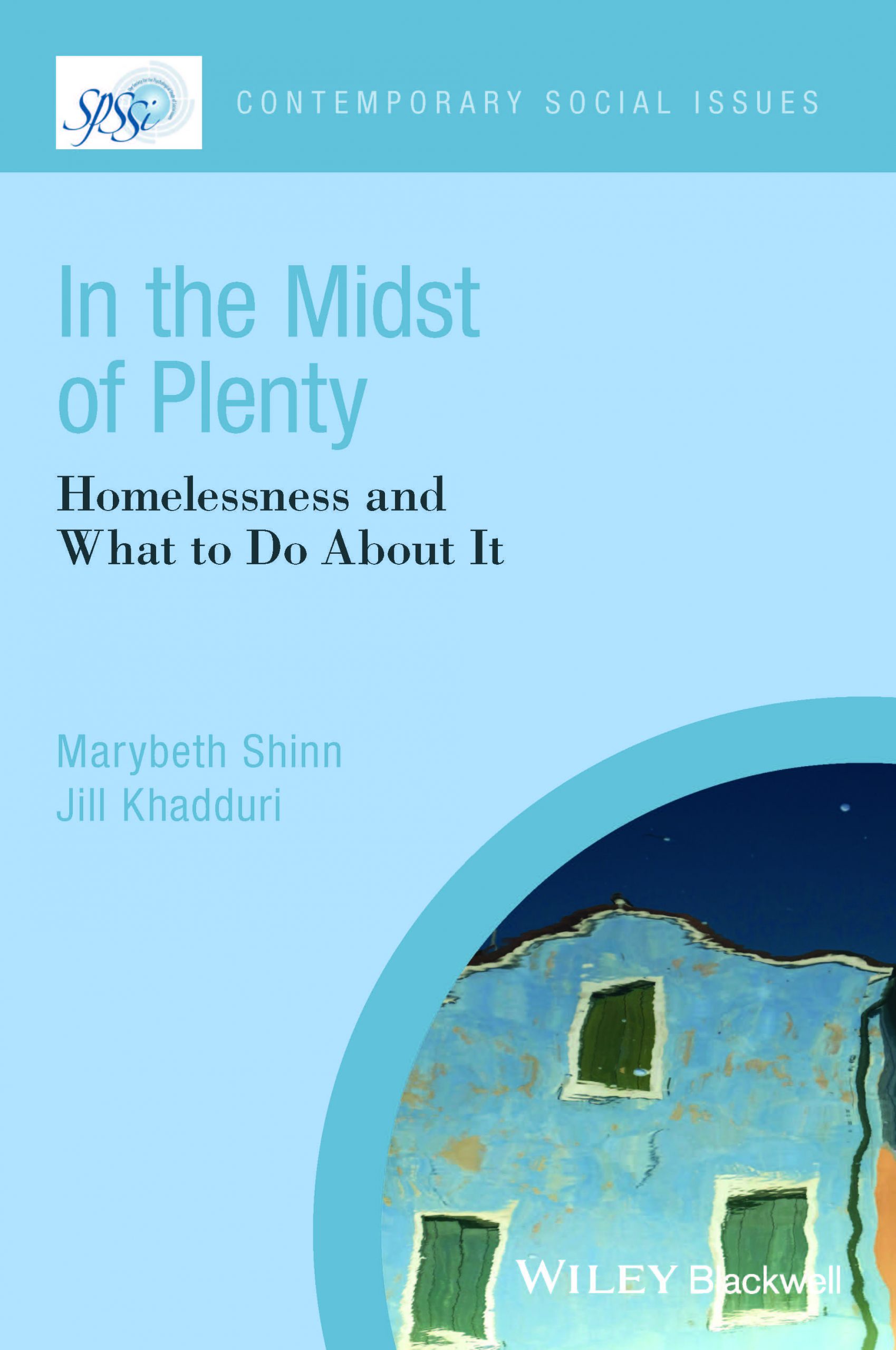Almost 570,000 people sleep on the streets or in emergency shelters across the United States on any given night. The count rises to about 1.6 million over a full year. But who are they? What causes their homelessness? How does the country end it and prevent it from persisting?
These are the questions that the new book “In the Midst of Plenty: Homelessness and What to Do About It” by Marybeth Shinn and Jill Khadduri tackles. It’s a comprehensive look at an issue that’s endured for decades nationwide.
Modern homelessness was born out of the late 1970s housing affordability crisis — which was a product of income inequality, rising real-estate prices and a declining number of units available for people experiencing poverty, among other factors.
The problem continues due to the tension between exorbitant housing costs and unlivable wages, the book argues. Policy decisions, coupled with the allocation of already available resources in the United States, could end homelessness.
“Just as individuals sometimes make choices that may lead them to homelessness, nations make choices that can lead to high rates of homelessness for their citizens,” Shinn and Khadduri write.
Shattering widely believed perceptions, the book presents some surprising demographic findings: the highest risk of entering a shelter exists at infancy, and half of the adults who experience sheltered homelessness over the course of a year don’t have a severe mental illness or disability.
“People who experience homelessness are not another species…Homelessness is a state that people pass through. It’s not permanent,” Shinn, a professor in Vanderbilt University’s human and organizational development department who’s been researching homelessness for over three decades, said in an interview with Capital News Service.
Affordable housing is a key to ending and preventing homelessness, the book says. Ongoing rental subsidies alone can often help people avoid falling into homelessness and save those who are experiencing it.
“Some people with serious mental illnesses or other disabilities will need additional supports, but everyone needs housing,” Shinn and Khadduri write.
Housing-first approaches, largely favored by service providers and advocates, supply permanent, affordable housing to people experiencing homelessness. These programs can act as a springboard for addressing other issues like unemployment or substance abuse, instead of requiring participants to address those factors before being housed.

The U.S. Department of Housing and Urban Development (HUD) has shifted its support to housing-first programs in recent years. It encourages local homeless service providers to use the federal funds they’re allocated on rapid rehousing and permanent supportive housing instead of the previously preferred transitional housing model.
Rapid rehousing offers short-term, personalized rental assistance that doesn’t require prerequisites like employment, lack of a criminal record or sobriety. Permanent supportive housing combines housing assistance and voluntary support services for people who have been chronically homeless while struggling with conditions like physical disabilities, mental illnesses or substance abuse disorders.
Transitional housing — which offers subsidized or sometimes free housing and intensive services for up to two years — hasn’t yielded much success, based on the limited number of studies conducted on such programs.
Expanding the federal government’s Housing Choice Voucher Program is the most effective way to grow the country’s affordable housing stock, the book argues. It holds rental costs to 30% of households’ adjusted incomes, the HUD standard for housing affordability.
The number of severely rent-burdened households, those that spend over half their income on rent and utilities, more than doubled — from 4 million to 8.5 million — between 1978 and 2008. The count was 8.3 million in 2015, according to HUD data.
Studies have proven that Housing Choice vouchers can prevent poor families from becoming homeless and rescue others already experiencing it. But the number of subsidies has only grown by about 200,000 from the early 2000s to 2018, when it used to grow by 300,000 a year.
Khadduri said she hopes readers see that homelessness is a solvable problem. After working on housing policy at HUD for 25 years, she joined the social-science research company Abt Associates as a principal associate for social and economic policy. Since 2007, she’s also been one of the lead investigators for HUD’s Annual Homeless Assessment Report for Congress.
“We know how to do it. We know how to provide people with effective housing assistance,” Khadduri told CNS. “We know from a whole body of research on tenant-based housing vouchers that they’re effective, that people can use them successfully, that they prevent homelessness.”
Evidence supports housing programs’ successes, but what’s needed to drive a systematic end to homelessness, Shinn and Khadduri argue, is political will.
“The inequality that leads some to live in mansions and others in the streets is not an inexorable consequence of market forces. It is a consequence of social policies,” they write. “We could choose differently.”

You must be logged in to post a comment.